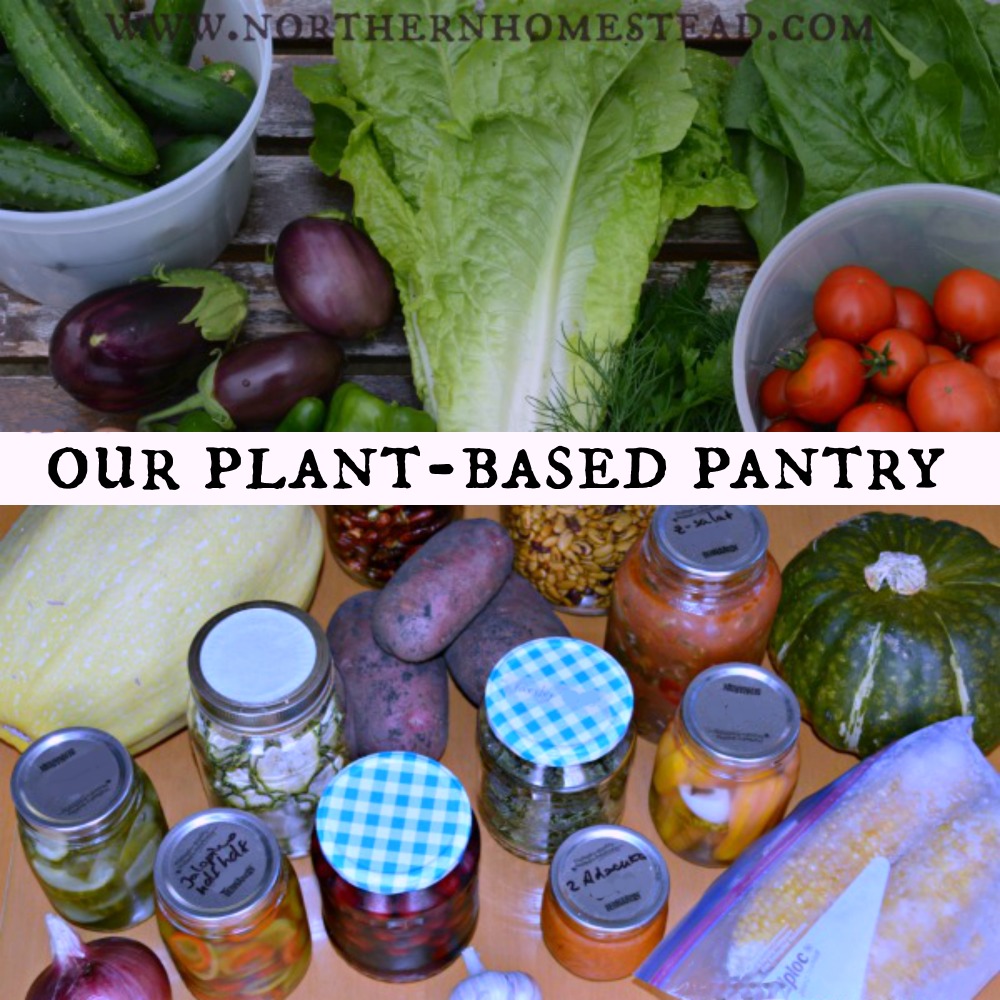
For some reason, homesteaders enjoy reading about each other’s pantries. It gives us ideas on what and how to store food and provides inspiration. Here’s a glimpse into our plant-based pantry, showcasing the foods we can and can’t grow ourselves, all of which we’re grateful to enjoy nonetheless.
If you’ve followed our blog for a while you would have noticed that we are not about self-sufficiency, but about living a healthy, mindful, and happy life. We love to grow as much as possible, but to be realistic, we can’t grow all our food, and I do not think we have to. If you can grow all your food, good for you, in this case, this list might give you more ideas on what to grow.
When choosing what to eat we prefer wholesome plant food. Dr. Greger’s checklist, helps us to get a variety of healthy foods into our pantry and diet every day. However, not all the foodstuff in our pantry is 100% wholesome, we are not religious about it, but most of it is.
Legumes
Legumes are a big part of our diet. We eat them every day. There is no way we could grow as many as we eat in our garden. But we do grow some of them and buy the rest preferably in bulk.
- Pole Beans Scarlet Runner grows well here.
- Black Turtle dry Beans if we have room, otherwise we just buy black beans.
- Tiger’s Eye Bean is so worth growing since I have not found a source to order them from. Pinto beans are similar, so we buy lots of those.
- Kidney beans.
- Chickpeas are a must-have. Dry, canned, and as flour. I usually make my own flour in the Vitamix blender.
- Lentils, red and green, we love them.
- Peas, fresh from the garden and dry from the store.
- Tofu, soy milk (make your own), and tempeh.
Storage tips: Dry beans have a long shelf life. We store them in buckets with a lid in a dry place.
We also pressure can dry beans, see here how we do that.
Berries
Raspberries are our main berry, we grow and preserve (freeze) lots of them. We also grow honeyberries, strawberries, black currants, saskatoons, and blackberries.
Storage tips: We like to preserve berries by freezing them and enjoying them in our breakfast. And we love homemade berry jams.
Fruit
In our very short growing season, we cannot grow much of fruit. Even though we have planted many fruit trees and hope to get more of our own supply.
- Apples are a fruit we can grow. Not so much the good eating variety, but we usually grow enough to make apple jam, sauce, and butter. There are also always lots of local apples that people allow us to pick for free, and they are grateful if we do. We make apple juice, wine, and chips.
- Apricot is my favorite fruit. We planted some trees and hope for the best. However, until we have our own harvest, we go to BC for U-Pick and make jam and canned and dried apricots.
- Citrus fruit. We enjoy our homegrown Meyer lemon and limes, but most of the citrus fruit we buy in.
- Cherries grow well here, and I think that our cold climate sour cherries are better than the sweet hot climate cherries (You can argue with me). We make jam, can, and dehydrate them.
- Grapes grow here, and seldom do we also buy some. Grapes are rarely available organic, so we do not have them very often. But we do buy raisins all the time.
- Kivi is another fruit we tried to grow a hardy variety, but haven’t had any fruit. We still get them from the store.
- Pears. Our trees are too young to produce yet, so we buy them and love them especially canned or dried.
- Plums to some extent grow here, but we also buy and dehydrate them.
- Dates are a must-have, yum.
- Banana is a must-have
- Avocado is an occasional treat
More storage Tips: Fruits that produce ethylene, such as bananas, apples, and melons, should be stored separately from other fruits and vegetables.
Vegetables and greens
We grow a good portion and also buy some vegetables and greens that we eat, simply because we eat so much of them. However, because we can grow so many veggies and salad greens, if we need to buy more, we allow ourselves to go shopping for better quality, preferably organic or naturally grown locally. Check out the Dirty Dozen article, annual vegetables for short growing season, and how to grow your salad greens year-round.
Mushrooms are not a vegetable, but it’s something we eat often. We like the white and brown cremini and shiitake mushroom. Occasionally we also get the other mushrooms as a special treat.
Storage tips: To preserve the harvest we store, freeze, can, ferment, and dehydrate. You can check out all the recipes and methods here.
Nuts and Seeds
Nuts and seeds are a great source of healthy oils. They are also a great replacement for dairy products, check out the creamy sauces that we make.
- Seeds: flax, chia, hemp, sesame and tahini (for homemade hummus).
- Nuts: Cashew, Walnut, Brazil nut, and nut mixtures.
- Peanut, we love peanut butter.
- Coconut milk in cans. Not a nut, but we use a lot of it.
Storage tips: We store nuts in a dry cool place. If there is more then we can eat soon, they can also be frozen to keep them fresh.
Grains
We use two categories of grain, whole grains and products made of grain. We buy all grains preferably organic, to avoid roundup sprayed grains.
- Oats rolled or steel cut and in muesli for breakfast.
- Bread. Most of our bread is homemade, dinner buns, tortillas, pita bread, etc. We start with grain berries, (spelt, wheat, kamut), grind our own flour, and make bread out of freshly ground flour. But we also buy white organic flour for occasional use. We also buy some crispbread and rice crackers.
- Noodles, both whole grain, and semolina.
- Rice, brown, wild, basmati, or whatever rice we find interesting at any given time.
- Buckwheat, it’s a less-known grain but very healthy and delicious.
- Quinoa is also an occasional treat.
- Corn flour
- Cream of wheat
Storage tips: Grain berries have a long shelf life. We store them in bucked with a lid. Homemade bread freezes well.
Seasonings and condiments
- Herbs: Dill, basil, parsley (Curley and Italian), basil, cilantro, thyme, rosemary, savory, oregano, lemon grass – all mostly homegrown fresh, dried, or frozen.
- Celery seeds
- Mustard seeds
- Ginger
- Turmeric
- Cumin
- Paprika and smoked paprika
- Hot chili (homemade)
- Black pepper
- Garlic and onion freeze-dried (We use the Litehouse brand, for some herbs and ginger too)
- Pickling and herbal salt
- Brags liquid amino (using it instead of salt)
- Nutritional yeast
- Vinegar: white wine, balsamic, rice and apple cider
- Salsa (all homemade)
- Maple or agave syrup
- Organic cane sugar
- Local honey (plant’s nectar only gathered by bees, you can disagree)
Other
- Vanilla
- Baking soda and powder
- Yeast, Saf Instant Yeast
- Cocoa powder
- Extra virgin olive oil
- Coconut oil
- Arrowroot powder
- Tapioca Flour (For crapes)
- Cornstarch (Organic)
- coffee and tea (homegrown herbal tea)
There are other things here and there in our pantry, fridge, and cold room, but this gives you a good idea of what a plant-based pantry looks like. As you see it’s not much different from any pantry, except that the majority of our foods are vegetables, fruit, and berries. It is a simple but yummy way to eat. And we love good food!
What is a must-have in your pantry that we are missing?
We invite you to subscribe to Northern Homestead and follow us on Instagram, Facebook, or Pinterest for the latest updates.
More posts you might enjoy

DIY and Low-Cost Windows and Doors Insulation Options
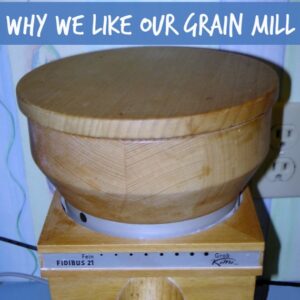
Why We Would Recommend a KoMo Fidibus Grain Mill
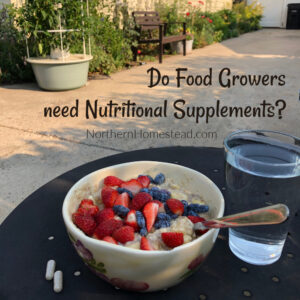
Do food growers need nutritional supplements?
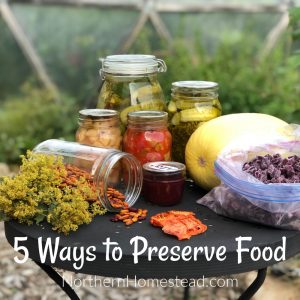
5 Ways to Preserve Vegetables, Fruits, and Herbs

Heating your Home with a Wood Stove in Town
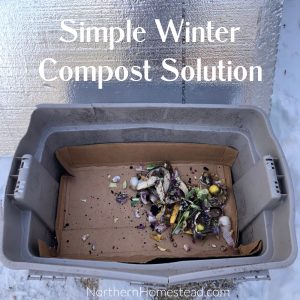
Simple Winter Compost Solution

40 Easy Tips for Gardening on a Budget

A Country Garden Cabin

Gardening Books for Every Season



Leave a Reply